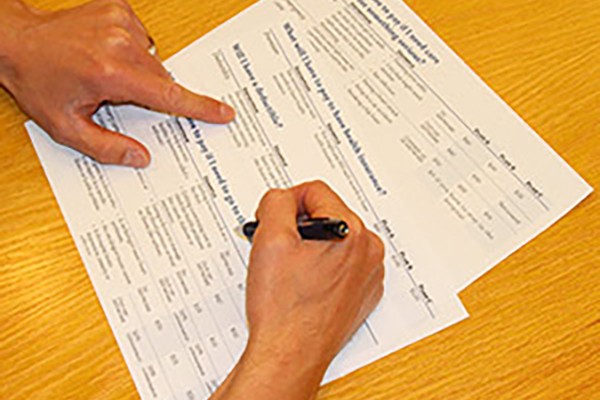Brown School’s Pettus-Davis to lead research arm of new prisoner reentry initiative
Carrie Pettus-Davis, PhD, assistant professor at the Brown School at Washington University in St. Louis, has been tapped to serve as executive director for the Concordance Institute for Advancing Social Justice, the research initiative of a new public, private and academic partnership aimed at lowering incarceration rates in the United States.
Tax-time savings programs effective in helping low-income families save refunds, study finds
Tax-time savings programs help low- and moderate-income families save significantly more of their refunds than those who choose not to participate, finds an analysis of such a program called $aveNYC. The study was co-authored by Michal Grinstein-Weiss, PhD, associate professor at Washington University in St. Louis, Brown School and associate director of the Center for Social Development.
Gun violence initiative launches with standing-room-only event
Washington University in St. Louis kicked off a
yearlong initiative, “Gun Violence: A Public Health Crisis,” with a
panel discussion April 21 at the Eric P. Newman Education Center.
WashU Expert: Jenner letting go of ‘pressures to conform’ as he considers gender transition
Bruce Jenner, former Olympic gold medalist and patriarch of reality television’s Kardashian clan, is bringing national attention to issues of gender transition ahead of his April 24 interview with ABC News’ Diane Sawyer. One reason is that Jenner may finally have found a way to let go of pressures to conform, said Vanessa Fabbre of the Brown School at Washington University in St. Louis, an expert on later-in-life gender transitions.
Convenience, workplace incentives may increase use of public transit
Transit stops close to home and workplace incentives are associated with higher likelihood that commuters will choose public transportation, according to research from the Brown School at Washington University in St. Louis and Washington University School of Medicine in St. Louis. The study is co-authored by Aaron Hipp, PhD, assistant professor at the Brown School.
Brown School honors alumni
The Brown School held its 2015 Distinguished Alumni Awards event on April 14, honoring six alumni.
Study finds 1.2 percent of preschoolers on Medicaid use psychotropic drugs
A new study finds that that 1.2 percent of American preschool children on Medicaid are using psychotropic drugs, including antidepressants, mood stabilizers and medications for attention-deficit disorder. Using 2000-2003 Medicaid Analytic Extract data from 36 states, a group of researchers at the Brown School at Washington University in St. Louis and at Washington University School of Medicine in St. Louis found preschoolers are receiving psychotropic medications despite limited evidence supporting safety or efficacy.
Report gives guidance to FDA on tobacco policy and public health
The Brown School’s Douglas A. Luke, PhD, professor and director of the Center for Public Health Systems Science at Washington University in St. Louis, was on an Institute of Medicine committee which recently released guidelines to the U.S. Food and Drug Administration on using
agent-based models to improve the effect of tobacco control
policy on public health.
McCaskill holds roundtable discussion on aging at Washington University
As part of her series of Senior Listening Sessions across Missouri, Sen. Claire McCaskill held a roundtable discussion with experts on retirement security, elder justice and healthy aging March 31 at the Brown School’s Goldfarb Hall. Among the roundtable participants were seven from Washington University in St. Louis.
Study suggests ways to simplify health insurance enrollment
While the federal health-care law has reduced the number of uninsured people by about 10 million, challenges remain, including how to educate new enrollees about their coverage options. New research at Washington University shows that communicating information about the Affordable Care Act can be made simple.
View More Stories

